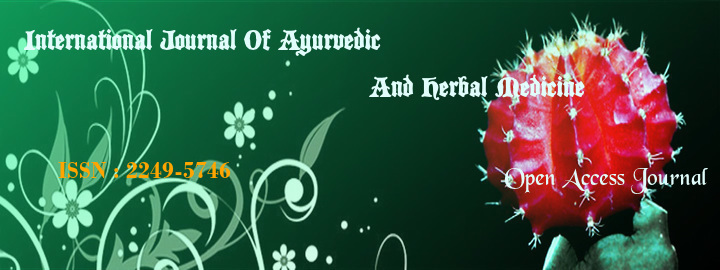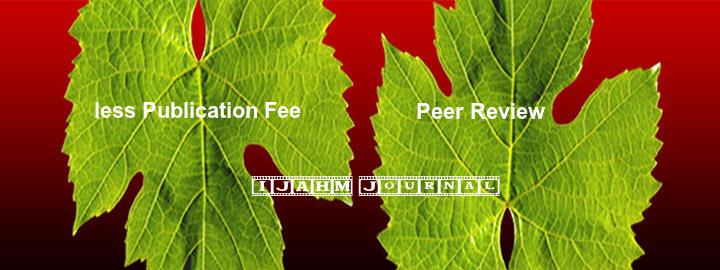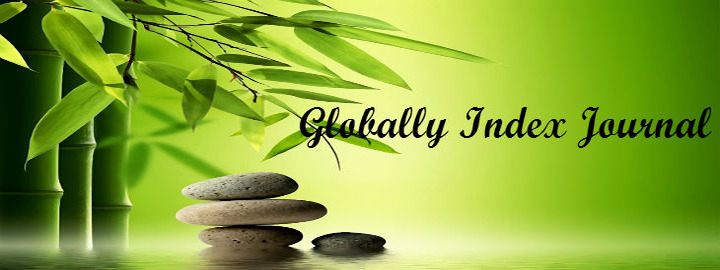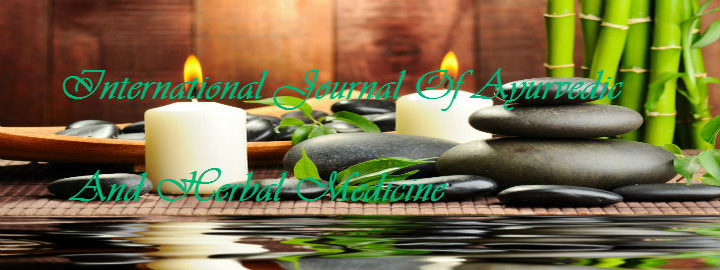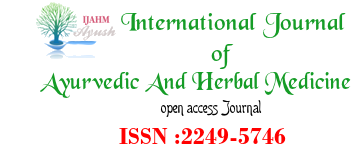


Volume & Issue : Volume 4 Issue 5
Therasilin Louis*, Sonya Cheriyan, Nishanth GopinathExperimental Pharmacology Unit, Nagarjuna Herbal Concentrates Ltd, Kalayanthani, Thodupuzha, Idukki-685 588, INDIA * Corresponding Author Dr. Therasilin Louis Experimental Pharmacology Unit Nagarjuna Herbal Concentrates Ltd Kalayanthani Post Idukki – 685 588 INDIA E-mail:- This email address is being protected from spambots. You need JavaScript enabled to view it. |
Abstract
Amruth Jeevan Rasayan is comprising of the purely herbal ‘avaleha’ / herbal jam named Amruth Jeevan Rasayan Avaleha along with the mineral-rich Amruth Jeevan Rasayan Tablets, formulated following the principles of treating aging and age-associated diseases. Being an anti aging drug, Amruth Jeevan Rasayan must have antioxidants and free radical scavenging activity to minimize free radical-induced damage, which is a key cause of aging. The methanolic extract of Amruth Jeevan Rasayan was evaluated in vitro for total phenolic and free radical scavenging activity. The total phenolic content was measured using Folin-ciocalteu reagent against gallic acid. Free radical scavenging activity was measured by 2,2-diphenyl-1-picryl hydroxyl (DPPH) and 2,2’-Azinobis(3-ethylbenzothiazoline-6-sulfonic acid) di ammonium salt (ABTS) assay. The studies showed that Amruth Jeevan Rasayan possesses antioxidant activity. The results of this study suggest that the antioxidant and free radical scavenging activity of Amruth Jeevan Rasayan may explain its Rasayan effect and justify its use as a medicine for age associated diseases.
Key word
Antioxidant, Phytochemicals, Amruth Jeevan Rasayan, DPPH, and ABTS
REFERANCES
1. 1. Sreedhar V, Ravindra Nath LK, Madana Gopal N, Sanjith Nath M. In-vitro antioxidant activity and free radical scavenging potential of roots of Vitex trifoliate Res J Pharm, Biol and Che Sci 2010; 1(4):1036-1044.
2. Halliwell B, Gutteridge JMC. Oxygen toxicity, oxygen radicals, transition metals and disease. J Biochem 1984; 219:1–14.
3. Simonian NA, Coyle JT. Oxidative stress in neurodegenerative diseases. Annu Rev Pharmacol Toxicol 1996; 36: 83–106.
4. Dhalla NS, Temsah RM, Netticadan T. Role of oxidative stress in cardiovascular diseases. J Hypertens 2000;18:655–673.
5. Vant Veer P, Jansen MC, Klerk M, Kok FJ. Fruits and vegetables in the prevention of cancer and cardiovascular disease. Public Health Nutr 2000;3:103–107.
6. Bokov A, Chaudhuri A, Richardson A. The role of oxidative damage and stress in aging. Mech Ageing Dev 2004;125:811–826.
7. Madamanchi NR, Vendrov A, Runge MS. Oxidative stress and vascular disease. Arterioscler. Thromb Vasc Biol 2005; 25:29–38.
8. Fritz KL, Seppanen CM, Kurzer MS, Csallany AS: The in vivo antioxidant activity of soybean isoflavone in human subjects. Nut Res 2003;23:479–487.
9. Patricia I, Oteiza AG, Erlejman S, Verstraeten V, Keen CL, Fraga CS. Flavonoid membrane interactions: A protective role of flavonoids at the membrane surface. Clin Develop Immunol 2005;12:23–25.
10. Bravo L. Polyphenol: Chemistry, dietary sources, metabolism, and nutritional significance. Nutr Rev 1998;56:317–333.
11. Heim KE, Tagliaferro AR, Bobilya DJ. Flavonoid antioxidants: Chemistry, metabolism and structure-activity relationships. J Nutr Biochem 2002;13:572–584.
12. Pier-Giorgio P. Flavonoids as antioxidants. J Nat Prod 2000;63:1035–1042.
13. Rice-Evans C, Miller N, Paganga G. Antioxidant properties of phenoilc compounds. Trends Plant Sci 1997;2:152–159.
14. Sealbert A, Johnson J, Saltmarsh M. Polyphenols: Antioxidants and beyond. Am. J Clin Nutr 2005;81:2155–2175.
15. Ross JA, Kasum CM. Dietary flavonoids: Bioavailability, metabolic effects, and safety. Ann Rev Nutr 2002;22:19–34.
16. Rice-Evans CA, Miller N. Maxwell SJ. Prospects for the use of antioxidant therapies. Drugs1995;49:345.
17. Ames SN, Shigrenaga MK, Hagen TM. Oxidant, antioxidant and degradative disease of aging. Proc Nat Acad Sci USA 1993;90:7915–7922.
18. Robak J, Gryglewski RJ. Flavonoids are scavengers of superoxides anions. Biochem Pharmacol 1988;37:837–841.
19. Ardestani A, Yazdanparast R. Antioxidant and free radical scavenging potential of Achillea santolina extracts. Food Chem 2007;104:21–29.
20. Bingham M, Gibson G, Gottstein N, Pascual-Teresa SD, Minihane AM, Rimbach G: Gut metabolism and cardio protective effects of dietary isoflavones. Current Top Nut Res 2003;1:31–48.
21. Silva BM, Andrade PB, Valentãoo P, Ferreres F, Seabra RM, Ferreira MA: Quince (Cydonia oblonga Miller) fruit (pulp, peel, and seed) and jam: antioxidant activity. J Agric Food Chem 2004;52:4705–4712.
22. Shasthri K, Chaturvedi G. Charaka Samhita with Vidyotini Commentoty. Varanasi: Chaukambha Bharati Academy 2007;pp.35–6.
23. Govindarajan R, Vijayakumar M, Pushpangadan P. Antioxidant approach to disease management and the role of ‘Rasayana’ herbs of Ayurveda. Journal of Ethnopharmacology 2005;99:165–178.
24. Baxi AJ, Shukla VJ, Bhatt UB. Guideli Monograph on Testing of Some Ayurvedic Formulations. Jamnagar: Gujarat Ayuurveda University; 2002.p.5-15.
- Cooper RM, Resende MLV, Flood J, Rowan MJ, Beale MH, Potter U. Detection and cellular localization of elemental sulphur in disease-resistant genotypes of theobroma calcao. Nature 1996;379:159-162.
- Liu RH. Potential synergy of phytochemicals in cancer prevention: mechanism of Action. Journal of Nutrition 2004;134: (12 Suppl):3479S-3485S.
- Abo KA, Ogunley, VO & Ashidi JS. Antimicrobial poteintial of Spondias mombin,Croton zambesicus and Zygotritonia crocea. Journal of Pharmacological Research. 1991;5(13):494-497.
- Nweze EL, Okafor JL & Njoku O. Antimicrobial Activityies of Methanolic extracts of Trume guineesis (Scchumn and Thorn) and Morinda lucinda used in Nigerian Herbal Medicinal practice. Journal of Biological Research and Biotechnology 2004;2(1): 34-46.
- Doughari JH & Obidah JS. Antibacterial potentials of stem bark extracts of Leptadenia lancifoli.against some pathogenic bacteria. Pharmacologyonline 2008;3: 172-180.
- Bajpai M, Pande A, Tewari SK and Prakash D. Phenolic contents and antioxidant activity of some food and medicinal plants. In J Food Scnces and Nutrition 2005;56(4): 287-291.
- Vaya J, Belinky PA, Aviram M. Antioxidant constituents from licorice roots: Isolation, structure elucidation and antioxidative capacity toward LDL oxidation. Free Radical Biol. Med 1997;23(2):302-313.
- Eyob S, Martinsen BK, Tsegaye A. Antioxidant and antimicrobial activities of extract and essential oil of korarima (Aframomum corrorima (Braun) P.C.M. Jansen). African Journal of Biotechnology 2008;7(15):2585-2592.
- Bhatnagar M, Sisodia SS, Bhatnagar R. Antiulcer and antioxidant activity of Asparagus racemosus Willd.and Withania somnifera Dunal. in rats. Ann N Y Acad Sci 2005;1056:261–78.
- Sumanth M, Mustafa SS. Anti-stress, adoptogenic and immunopotentiating activity roots of Boerhaavia diffusa in mice. Int J Pharmacol 2007;3:416–20.
- Raju D, Illango K, Chitra V, Ashish K. Evaluation of anti-ulcer activity of methanolic extract of Terminalia chebula in experimental rats. J Pharm Sci Res 2009;1:101–7.
- Sheth MD, Rege NN, Dahanukar SA. Effect of Tinospora cordifolia on gastrointestinal dysmotility induced by chronic, unpredictable wrap-restraint. Indian J Pharmacol 2001;33:135.
- Mehrotra V, Mehrotra S, Kirar V, Radhey S, Misra K, Srivastava AK, Nandi SP. Antioxidant and antimicrobial activities of aqueous extract of Withania somnifera against methicillin-resistant Staphylococcus aureus, Journal of Microbiology and Biotechnology Research 2011;1(1), 40-45.
- Karimi E, Oskoueian E, Hendra R, Jaafar HZ. Evaluation of Crocus sativus L. stigma phenolic and flavonoid compounds and its antioxidant activity. 2010;15(9):6244-56.
- Mahapatra Arun Kumar, Nisha Kumari Ojha$, Abhimanyu Kumar. Rationality of Swarna Prashan in Pediatric Practice. In J Ayurvedic And Herbal Medicine 2013;3:3, 1191:12003
index







